#explore north india
Text
youtube
The most beautiful place on the Earth is KASHMIR, India. There are 4 places in the mountains of Himalayas. Valleys, mountains, passes and peaks (or summits). Mostly the tourists will be in the valleys, watching the tall mountains. The trekkers were in the mountains, crossing the passes and watching the valleys. The mountaineers climb the peaks!
The views for each observer is different and is breathtakingly beautiful. But the landscape seen by the trekkers cannot be ever seen by the tourists.
#Kashmir#India#Incredible India#KGL#trekking#hiking#camping#exploring#wanderlust#Himalayas#Himalayan#North#Alpine#High Altitude#YHAI#Youtube
2 notes
·
View notes
Text
Ladakh Luxury Package
#ExploreLadakhLuxury
5 NIGHTS / 6 DAYS : INR 2,02,200/-
6 NIGHTS / 7 DAYS : INR 2,50,300/-
PER PERSON (MINIMUM 2 PAX)
#LEH : #CHAMBACAMPTHIKSEY
#NUBRA : #CHAMBACAMPDISKIT
#PANGONG : #MOBILECAMP
*Taxes extra as applicable
#Ladakh #LadakhPackage #LadakhLuxuryPackage #NorthIndia #Adventure #FamilyHoliday #FamilyPackage #Travel #AdlerTours #AdlerToursSafaris #AdlerToursandSafaris…

View On WordPress
#Adler Tours#Adler Tours & Safaris#Adler Tours and Safaris#Asia#CHAMBA CAMP DISKIT#CHAMBA CAMP THIKSEY#Explore Ladakh Luxury#family Holidays#Gujarat#India#Ladakh#ladakh luxury package#ladakh package#Ladakh Tour Packages#LEH#MOBILE CAMP#Must visit in North India#north india#NUBRA#PANGONG#Rajkot
0 notes
Photo

Explore Beautiful Meghalaya in North East India with #BonTravelIndia. We are offering all inclusive great holiday packages at best prices.
For more details, Call Now : 📞 +91-8802149265
Browse our packages here - 🌐 https://bit.ly/3D5JCGU
0 notes
Text
Notes on a South Asian Tropical Cyrodiil (and more!)
So, many TES fans know that before Oblivion, Cyrodiil was supposed to be tropical. The most striking phrase to describe it, "most is endelss jungle", says it all. The quick and snarky explanation is that Todd Howard watched LOTR, was "inspired" by it, and that's why everything in Oblivion looks sort of like a Rennaisance Fair. In any case, I think it was a huge missed opportunity, especially in a world where most popular fantasy is European inspired, to have replaced what could have been very cool tropical enviroments with what is frankly a lame "Talos used his magic" lore retcon. You can read the 1st edition of the Pocket Guide to the Empire to see what we missed.
But it's not only Cyrodiil which we missed this way… Tamriel just makes more sense as a tropical continent. While the size and the exact location of the continent is discussed by nerdier nerds than me, I think it does make sense like this, and not only that, we have a very interesting world parallel to compare it to: India. From a tropical rainy south to the cold mountains of Skyrim, Tamriel is surprisingly similar to the Indian subcontinent, and many of its geographical quirks can be explained if, instead of assuming a temperate Cyrodiil, we go all out with that concept. This is going to be a long post, you have been warned.
So with that in mind, I'll try to make a not-so brief tour (with some evocative pictures along the way) of a rebuilt tropical Tamriel, following the rains of the moonson:
The position of Tamriel, in this case, would be roughly where the Indian subcontinent is located in real life, that is again, tropical, stretching the Tropic of Cancer (is there a name for the tropics of Nirn? Interesting to think about) Here, we see our numbers pan out well: Tamriel is mentioned to be between 4000 and 3000km across east to west and 2000 and 3000km south to north. VERY, VERY roughly, there is 4000km between Pakistan and Myanmar, and 3000km from Sri Lanka to the northern tip of Tibet. Plot that on a map, and you already can see some coincidences. Now, this is a rather average continent, not Pangea sized like some imagine Tamriel to be. This does help explain why, for example, the interior of Cyrodiil is rainy and good for agriculture instead of a desert. But it also means that it's very likely that Tamriel is ruled by monsoons. Monsoons are complex, but they basically form when there are plenty of warm places for water to evaporate (the South Indian ocean), and mountains that block cool winds from the opposite direction (the Himalayas). We have a very similar situation here, with a mountainous Skyrim on the north of a tropical Cyrodiil facing an equatorial southern ocean. So, what happens are monsoons, perhaps not as strong as IRL India, but carrying rains very deep into the continent. This would feed the rivers and the rich agricultural areas of Cyrodiil, and would have some other consequences.
So let's imagine our trip South to North. In the South, in Black Marsh, Blackwood and Lleyawiin, and Pellentine (southern Elsweyr) we would find, much like in the original lore, humid tropical climates, jungle, wetlands, and my favorite, mangrooves. I would expect mangrooves to stretch in this whole area, across rivers. In fact, one of the reasons why Black Marsh could be so hard to explore and control by the Empires at Cyrodiil would be the presence of thick mangrooves all over its coast. This is the region of Cyrodiil that would most resemble "endless jungle".
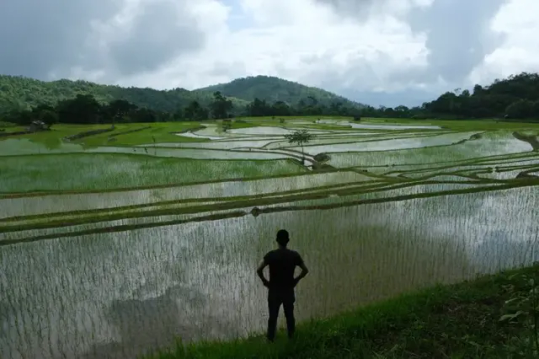
(Rice fields in India, what I imagine most of this Tropical Cyrodiil would look like)
However, as any lore person knows, Anequina, northern Elsweyr, is arid desert. Does this mean a contradiction? Far from it, we have a similar example in IRL India: the Deccan Plateau, which has a semi-arid to arid climate. This can be easily explained by higher elevations up to a small mountain chain separating it from Cyrodiil to the north, and the fact that little rain would reach behind this "Anequina Plateau" would make the region of Kvatch and Anvil more dry much like in canon, in this case, more scrublike. This highland desert would not be as harsh as Elsweyr is usually concieved, maybe, but its driest regions might justify places such as Dune. (On that matter, it always bothered me to read about the "cities" of southern Elsweyr and there being only two or three there. If I had to redesign it, I would move some from the north to the south).

(the Deccan Plateau in India, it gets greener or drier according to the monsoon)
Keeping on our tour of Tamriel, the Topal Bay and the very rainy Black Marsh funnels the rainy monsoon from the south towards central Cyrodiil. Here we find the endless jungle of the Nibenay Valley. But unlike the rainforests of Elsweyr and Black Marsh, these dense forests and rich river plains are mediated by the monsoon winds, with dry seasons alternating with copious rain. This has huge effects on agriculture and culture in general, as agriculture is defined by the rythms of the rain. Keeping with our South Asian theme and the 1st edition of the Guide to the Empire, Cyrodiil would have huge extensions of rice paddies, as well as terrace farming and much hardier crops in the highlands, instead of the… well, almost absent agriculture we saw in Oblivion. The food, clothing, architecture and overall culture of Cyrodiil would be very different with this. The original Pocket Guide said some of its main exports besides rice and fruit are moon sugar and silk. Moon sugar in Cyrodiil, can you believe it?
Another thing I imagine Cyrodiil would be famous for would be fish and seafood, well, river food. Rice plantations can host fishes and crustaceans to get some extra protein, and well, what about mudcrabs? Hell, as preparing muddy soil is vital for rice cultivation, no wonder mudcrabs are considered a nuisance. Imagining critters in gameplay in such an enviroment also makes my mind roam. Tigers, elephants, rhinoceros, and this is not even getting into the more mythical creatures you could find, instead of endless wolves… Rice cultivation is also more labor intensive than other crops, and it also has a deep impact on the terrain, "terraforming" so to say, huge expanses into paddies and terrace farms. This level of cultivation also requires an established infraestructure of irrigation. While this does not necessarily means a centralized goverment, as farmers can build it and maintain it by themselves, the rise of an empire, i.e., the Empire, will also increase the complexity of these systems, adding canals, dams, reservoirs and more ambitious projects, like we see in India and China. I am sure some people more knowledgeable about those cultures can comment more.
While this Cyrodiil is a tropical/subtropical region covered in "endless jungle", some parts might indeed resemble the rolling hills and grasslands you see in Oblivion. Deforesting jungle for pasture is something very common around the world (some have joked this mass deforestation was later in canon explained as a gift from Talos lol) and you can see the results, like in tropical Australia and my closer Mata Atlantica, do superficially resemble temperate pastures in say, Europe. Until you notice the palm trees, of course. But yes, I can see the Nords being a mostly herding people (more on that below) bringing their sheep and cows to the tropical lowlands and, well, deforesting to make space for them.
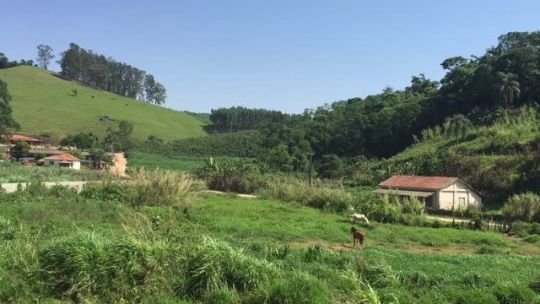
(ranches in Sao Paulo state, Brazil, notice the palm trees)
Imperial City just so happens to be built in an island in the middle of several river crossings, in what seems to be a swampland. The first thing that came to mind when I read that was Tenochtitlán. The districts of Imperial City would have been built over the centuries on artificial islands on a shallow lake, using plentiful mud and organic matter to make fertile chinampas. I believe this would make for a striking sight. Instead of just a city in the middle of a empty island, you would see the White-Gold tower and the rest of Imperial City rising from Lake Rumare, surrounded by rich farmland and its districts joined by walkways. (much like the old descriptions, actually, could you believe I wrote that without reading them?)

(Reconstruction of Tenochtitlán... and I just noticed, it's surrounded by (volcanic) mountains too, much like Imperial City)
Much like the Pantanal is one of the sources to the Paraguay River (which merges with the Paraná and then the Río de la Plata) IRL, here, the swamps of central Cyrodiil would be the source of the Niben. This does raise an interesting question, where is the source of the Niben? Is it Lake Rumare? No, I believe it would be several smaller rivers all the way from Bruma and even Skyrim. These small, violent mountain rivers eventually flow into the Rumare wetlands and only THEN in the placid great Niben. You DON'T want to be caught in one of the mountain valleys in rainy season. This does raise the question; won't the developments upriver, like Imperial City itself and the surrounding farmland, affect the course of the river downwards? There's plenty of water from the rain, but a more developed Cyrodiil might indeed have to grapple with this, supposing, for example, they manage to dam the river.
Looking west, we got the Colovian region, said to be composed of drier highlands and cliffs in the early Pocket Guide. Probably cut from the rain because of the Anequina Plateau, this is indeed more arid or "mediterranean", though I actually see it as more Australian. Maybe some of the drier parts near Hammerfell, resembling Argentine Cuyo and the northwest, would be a distant cry from the wetlands, having thorny dry forests and dry valleys, where yes, you could plant wine. The wetter cloud forests (much like the Yungas in South America, the place where the rain reaches last) could maybe be the home of the last pre-Imperial cultures of Cyrodiil. Fascinating places.

(Jujuy, Argentina. Just *near* are the Yungas cloud forests, where the last rains from the Atlantic meet the Andes, making for some AMAZING places)
Given that I mentioned enviroments near to/on the Andes IRL, let's talk about potatoes. Potatoes are unique crops, because they are the only ones who offer such calories and also be planted in cold enviroments like Europe. Or Skyrim. The discovery and spread of potatoes would cause demographic shifts on people living in cold areas. And they also originated in a unique enivorment IRL: the Andes, actually with possible hybridization from the Magallenic foresWHAT I MEAN, is that potatoes are very important and have been domesticated in very specific conditions. The Wroghtgarian Mountains would seem like a perfect equivalent of the Andes at the first glance, but they would be very different. The Andes, located between the Pacific Ocean and the greater Amazonian region, are very, very unique enviroments. These mountains, however, are in between inner seas. Something like the Atlas or the Alps? In any case, if there is some people who would appreciate hardy tubers that can grow in mountainous places, they are for sure the Orcs, or perhaps the Reachmen. Maybe an hybridization even between them?
This returns me back to Bruma and Skyrim. Some people (who make those excellent Oblivion mods) imagine Bruma with a Tibetan flavor. Personally, I imagine it more like Pakistan or Afghanistan, with lots of mesas and plateaus and valleys. It would look dry and rocky with some very fertile valleys by snowmelt, but it would look like a snowy wonderland on winter, indeed, Pakistan and Afghanistan are very snowy. Eventually, of course, ending up in the great barrier of the Jerall mountains and finally, Skyrim.

(the Alps? Skyrim? No, this is Kashmir on winter!)
In this scenario, Skyrim would be a quite dry place… or would it? There is no need for the Jeralls to be a straight line of peaks like the Himalayas. They could be a more "broken" series of mountains, like the southern Andes, but in any case, the rain from the south would clash into the higher mountains. Indeed, that is what actually happens in the Himalayas, the foothills of the Himalayas are some of the rainest places IN THE WORLD. These small valleys are something very unique and not very well known part of the world IRL. I can imagine the Skyrim equivalent would be as unique too, hard to navigate and live in. The forests of the Rift and Falkreath would be mazes of windy forests valleys, each with their own unique secrets under a perpetual fog and drizzle. This is a very interesting enviroment to imagine, where again, some of the older cultures of Tamriel could still live.
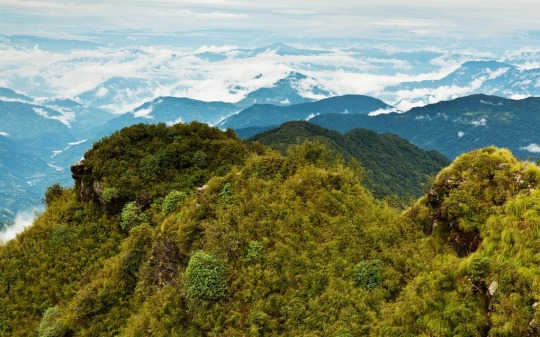
(forests of Bhutan, note how the humid valleys stretch into the distance before the cold Himalayas begin)
However, what does Skyrim look like once you cross the border with Ralof? I imagine some sort of more fertile Tibet, not as high as the Tibetan plateau, allowing for forest and alpine tundra. This is mostly because, while Skyrim is high up, I don't imagine as a plateau, but rather a series of broken mountains like the North American Rockies, which makes sense when you account for all the volcanic activity (there is another super-volcano down in Skyrim but nobody notices). I imagine that Skyrim would be a primarily herding pastoral land before the introduction of hardier crops such as potatoes, and even then. Nord culture would be very interesting reimagined like this; hillforts guarding herds of sheep and cows. It would also create a clash between the very, very agrarian south and the nomadic herding north, with High Rock and Hammerfell a gradient between the two.
I decide I will stop here, I haven't even touched Valenwood (though its subtropical forest seems rather coherent to me), High Rock (the most boring part of Tamriel IMO), Hammerfell, Summerset Islands (if you don't have tropical elves in your setting, you're a coward), or whatever the hell is going on Morrowind. But I hope you enjoyed this worldbuilding exercise and how to make sense of Tamriel's crazy geography. Next time, I'll try to play with tectonics and see if we can make it even more interesting.
But here we enter a problem; if we are operating on a level where Cyrodiil is roughly at the same latitude of India, wouldn't that make Skyrim too far from the poles to allow its tundra like climate, even with elevation? No doubt. Tibet is only as cold as it is because it's the roof of the world and far from any ocean. The northernmost tip Skyrim, like Tibet, would be at the latitude of Turkey, Korea or California, which can get quite cold, but not to the level of what we see on Winterhold or Dawnstar (Solitude sounds familiar, though). What's more, having an ocean up north would only moderate the temperature. Cool currents often don't bring cold per-se, just decrease rainfall. This would end with a very temperate and pleasant Skyrim instead of tundra. Which is on its own, interesting to explore.
Could Nirn be going through an ice age, like it's implied with the dissapearance of Atmora? Possibly, but it would imply revising everything I said before, as ice ages decrease rainfall and mess up with weather patterns all over the world. A colder Nirn would explain a lot, though.
If you liked what you read and would like more worldbuilding, consider tipping me on Ko-Fi and send me stuff to talk about, or just send an ask! I'm the kind of guy who reads encyclopedias and RPG manuals for fun, so I have plenty to talk about about everything from fantasy to science fiction to speculative evolution and alternate history!
#worldbuilding#tes#elder scrolls#skyrim#oblivion#the 'do more tropical worldbuilding you eurocentric cowards' agenda#fantasy#cosas mias
286 notes
·
View notes
Text
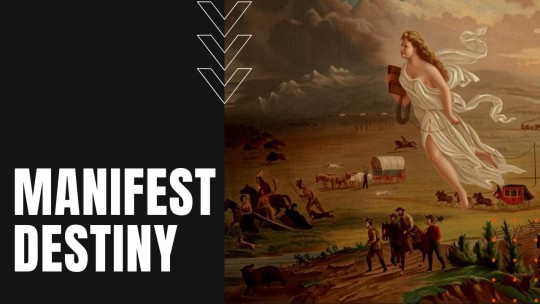
The term 'Sub-Saharan' Africa is a colonial language that was used to belittle African nations south of the Sahara and to separate the other countries from North Africa– Egypt, Morocco, Algeria, Tunisia, Libya, and Sudan due to them being Arab states.




Colored, Negro, Black, Nigger
Every one of these terms come from the mindset of Europeans not Africans. Indigenous African societies do not use the term black as a racial identity outside of influences brought by Western cultures.
Contemporary anthropologists and other scientists, while recognizing the reality of biological variation between different human populations, regard the concept of a unified, distinguishable "Black race" as socially constructed.
Black is a term developed in the Colonial Assembly of Maryland, after a rebellion called Bacon's Rebellion, fought from 1676 to 1677.
The alliance between European indentured servants and Africans (a mix of indentured, enslaved, and Free Negroes) disturbed the colonial upper class. They responded by hardening the racial caste of slavery in an attempt to divide the two races from subsequent united uprisings with the passage of the Virginia Slave Codes of 1705.
White took on the meaning "British, Christian and having rights. Black meaning not having rights.
These divided the two populations, by giving poor Europeans with no power, unprecedented power over all non-Europeans.
The laws were devised to establish a greater level of control over the rising African slave population of Virginia. It also socially segregated white colonists from black enslaved persons, making them disparate groups and hindering their ability to unite. Unity of the commoners was a perceived fear of the Virginia aristocracy, who wished to prevent repeated events such as Bacon's Rebellion, occurring 29 years prior.
By refusing to call you an African, it belittles you, no such thing as black names, black land or black languages. It is like calling a woman big lips or flat butt and refusing to call the woman by her actual name. "Hey colored girl, or black boy".
In social psychology, a stereotype is a generalized belief about a particular category of people.
African populations have the highest levels of genetic variation among all humans.

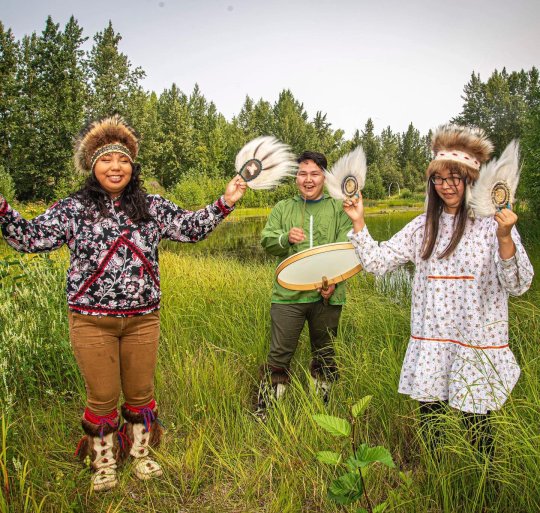
Why You Probably Shouldn't Say 'Eskimo'
People in many parts of the Arctic consider Eskimo a derogatory term because it was widely used by racist, non-native colonizers. Many people also thought it meant eater of raw meat, which connoted barbarism and violence. Although the word's exact etymology is unclear, mid-century anthropologists suggested that the word came from the Latin word excommunicati, meaning the excommunicated ones, because the native people of the Canadian Arctic were not Christian.
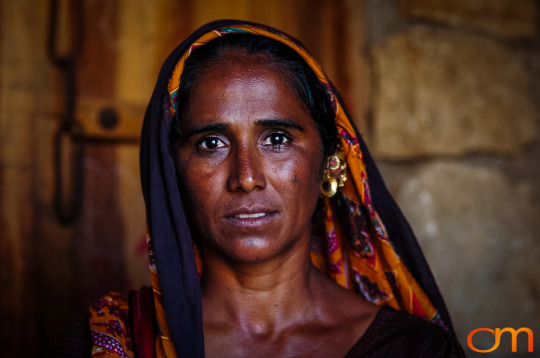
According to the Constitution of India, we are “the people of India that is Bharat”
In English language discourse, the word ‘India’ is used and in Hindi expressions, the word ‘Bharat’ is used. The Anglicised call it ‘India’, and the indigenous call it ‘Bharat’. Our ruling class calls it ‘India’, the others, the janata, call it ‘Bharat’. It has become a trend and fashion to prefer the word ‘India’ over ‘Bharat’. We converse with the country in Hindi and other vernaculars while we govern it in English.

Japanese people usually refer to their country as Nihon or Nippon
The name "Japan" in English is derived from the Portuguese word "Japão," which was used during the 16th century when Portuguese traders and explorers first arrived in Japan. The Portuguese term "Japão" likely evolved from the Malay word "Japang" or "Japang Pulau," which referred to the Japanese archipelago.
The Japanese people themselves refer to their country as "Nihon" (日本) or "Nippon" (日本), and these terms have been used in the Japanese language for centuries.

As European seen themselves as the elites of all races and god's chosen people. They took on the mindset of what I say makes the most sense.
Renaming essentially all populations they came in contact with, using their language as opposed to learning the language of the natives.
And whatever religion or spirituality people had Europeans demonized it and forced converted people to Christianity.
#african#afrakan#kemetic dreams#africans#brownskin#brown skin#afrakans#manifest destiny#colonization#colonialism#europeans#european#slavery#mindset#christianity#religion#spiritual#spirituality#asians#gujarat#gujarati people#india#bharat#nippon#nihon#english#eskimo#yupik#inuit#bacons rebellion
149 notes
·
View notes
Text
The Landscapes Of India






Welcome to the varied landscapes of India, my dear friends starting with the loftiest mountain range in the world called the Himalayas in the North to the grasslands of India in the South of Himalayan foothills, also spread across parts of central & western India.
We also have two big deserts in India.
A sandy, yellow desert called the Thar Desert/The Great Indian Desert in the North Western State of Rajasthan.
Then a salty desert or White Desert called the Great Rann of Kutch located in the western state of Gujarat.
The gorgeous backwaters of India are mostly found in the South Western state of India called Kerala.
Similarly the lush green tea gardens at Munnar is also located in the state of Kerala in South India.
The coastal areas with its gorgeous beaches spread in the West, East & South of India can be explored all round the year for some adventurous & fun filled activities.
Happy weekend, my dear friends & see you soon 🙌 🤗
#incredibleindia#travelblogger#travel destinations#bharat#traveller#destination#travelphotography#travel video#travels#travel blog#travelpics#travel india#travel photo#travelling#travelblog#tourist#tourism#india#outdoor#adventures
86 notes
·
View notes
Text


A Prince Riding an Elephant Holding an Ankush
The ankush has been a symbol of Indian royalty for many centuries. This painting, done in the imperial Mughal court in the 1600s, shows a young prince using an ornate ankush to guide an elephant through the forest.
The Young Emperor Akbar Riding on a Parade Elephant © Museum für Islamische Kunst, bpk Bildagentur, Art Resource NY

Sultan Muhammad 'Adil Shah and Ikhlas Khan Riding an Elephant
Artist: Haidar 'Ali (Indian)
Artist: Ibrahim Khan (Indian)
Date: ca. 1645

Indian School, 19th Century
A PRINCE WITH HIS CONSORT HUNTING A LION, NORTH INDIA, 19TH CENTURY
39 notes
·
View notes
Photo
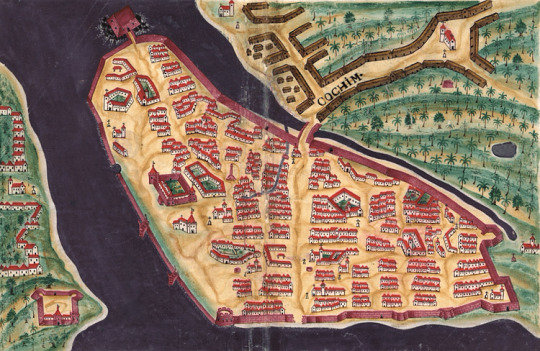
Portuguese Cochin
Cochin, located on the southwest coast of India, was a Portuguese colony from 1503 to 1663. Known to the Portuguese as Cochim, it was one of several important cities on India’s Malabar Coast and a great trade centre for spices like pepper. Cochin was the administrative capital of Portuguese India until it was replaced by Goa in 1530.
A fort was built at Cochin in 1503, the first in Portuguese India, as the Europeans used the city as their first headquarters in the East. The great explorer Vasco da Gama (c. 1469-1524) spent his last days in the city, and it remained a lucrative hub of the spice trade into the 17th century. The city was taken over by the Dutch in 1663, then the English in 1814, and finally gained independence with the rest of India in 1947. Today, the city is known as Kochi and is the most prosperous port in the Kerala region of India.
Vasco da Gama
In the 15th century, the Portuguese colonization of Madeira in the North Atlantic from 1420 was the first in a series of colonial stepping stones that eventually led to India. The treacherous Cape Bojador in West Africa was negotiated in 1434, the Azores were colonised from 1439, Cape Verde from 1462, and São Tomé and Principe from 1486. In 1488 Bartolomeu Dias sailed down the coast of West Africa and made the first voyage around the Cape of Good Hope, the southern tip of the African continent (now South Africa).
The famed Portuguese explorer Vasco da Gama followed in Dias’ wake and pioneered a maritime route from Portugal to India when in 1497-9, he sailed around the Cape of Good Hope, went up the coast of East Africa, and crossed the Indian Ocean to arrive at Calicut (now Kozhikode) on the south-west coast of India. His voyage, supported by King Manuel I of Portugal (r. 1495-1521), was intended to find a legendary Christian kingdom in the East and to give Portugal direct access to the Eastern spice trade and cut out the Arab middlemen traders. The first aim ended up being an illusion but the second was indeed achieved. For the first time, Europe could access by sea a trade which had been going on for centuries but which channelled luxury goods through the Red Sea and the Persian Gulf to be then taken by camel caravan to the Mediterranean. Such goods as pepper, ginger, cloves, and cinnamon were immensely popular in Europe and expensive.
Vasco da Gama, through a mix of inexperience, lack of trade goods, and Indian confidence in the status quo, failed to establish friendly trading relations with Calicut. A second Portuguese expedition, this time with 13 ships and 1500 men and commanded by Pedro Álvares Cabral, set off to repeat da Gama’s feat in March 1500 and was given the brief of muscling-in on Muslim trade by sinking any Arab ships they came across. Vasco da Gama sailed for a second time to India in 1502-3, this time with 15 ships. A result of this voyage was more trouble with the ruler of Calicut, but a trade treaty was agreed with Cochin further down the coast.
Continue reading...
25 notes
·
View notes
Text
sometimes it just hits me how blessed I am to be born into a culture that is so beautiful and inclusive. you would be living in the north of India and still have so many things that you wish to explore in the south. you would know all about the cuisines of western India and still feel the urge to try the eastern delicacies. our culture leaves soo much for us to EXPLORE and UNFOLD. no because how would shanti priya have that ICONIC moment if she wasn't wearing a dupatta? tell me honestly, would we enjoy weddings if we wouldn't find uncles dancing like it's their last one? how would we simp over men if they weren't wearing that black kurta? how would our mornings start without CHAI? would you have passed that exam if you hadn't had dahi shakkar before leaving? would you have climbed that mountain if there wasn't that shiv mandir up there? how would we romanticize eating pani puri? how would we earn when our elders give us money if we didn't have our festivals? that's the beauty of our culture, we find meaning in the most random things that may sometimes not even make sense but atleast it's something that's our OWN. when we finally embrace this, it's then that we feel at HOME. 💗
#desi tumblr#desi academia#desi dark academia#desi tag#just desi things#being desi#desi aesthetic#desi stuff#desi culture
166 notes
·
View notes
Text
By George Monbiot
The Guardian
July 15, 2023
Climate breakdown and crop losses threaten our survival, but the ultra-rich find ever more creative ways to maintain the status quo
According to Google’s news search, the media has run more than 10,000 stories this year about Phillip Schofield, the British television presenter who resigned over an affair with a younger colleague. Google also records a global total of five news stories about a scientific paper published last week, showing that the chances of simultaneous crop losses in the world’s major growing regions, caused by climate breakdown, appear to have been dangerously underestimated. In mediaworld, a place that should never be confused with the real world, celebrity gossip is thousands of times more important than existential risk.
The new paper explores the impacts on crop production when meanders in the jet stream (Rossby waves) become stuck. Stuck patterns cause extreme weather. To put it crudely, if you live in the northern hemisphere and a kink in the jet stream (the band of strong winds a few miles above the Earth’s surface at mid-latitudes) is stuck to the south of you, your weather is likely to be cold and wet. If it’s stuck to the north of you, you’re likely to suffer escalating heat and drought.
In both cases, the stuck weather, exacerbated by global heating, affects crops. With certain meander patterns, several of the northern hemisphere’s major growing regions – such as western North America, Europe, India and east Asia – could be exposed to extreme weather at the same time, hammering their harvests. We rely for our subsistence on global smoothing: if there’s a bad harvest in one region, it’s likely to be counteracted by good harvests elsewhere. Even small crop losses occurring simultaneously present what the paper calls “systemic risk”.
Already, regional climate shocks have helped cause a disastrous reversal in the trend of global chronic hunger. For many years, the number of hungry people fell. But in 2015 the trend turned and has been curving upwards since. This is not because of a lack of food. The most likely explanation is that the global food system has lost its resilience. When complex systems lose resilience, instead of damping the shocks that hit them, they tend to amplify them. The shocks amplified across the system so far have landed most heavily on poor nations that depend on imports, causing local price spikes even when global food prices were low.
If this happens when harvests are affected in just one country or one region, we can only imagine the results if extreme weather simultaneously hits several major growing regions.
Other papers have been published with similar themes, showing, for example, the impacts of the rising frequency of “flash droughts” and concurrent heatwaves in grain-producing regions, and how global heating hits food security. All have been largely or entirely ignored by the media.
We face an epochal, unthinkable prospect: of perhaps the two greatest existential threats – environmental breakdown and food system failure – converging, as one triggers the other.
There are plenty of signs, some of which I’ve tried to explain in the Guardian and, with a sense of rising urgency, in a presentation to parliament, suggesting that the global food system may not be far from its tipping point, for structural reasons similar to those that tanked the financial sector in 2008. As a system approaches a critical threshold, it’s impossible to say which external shock could push it over. Once a system has become fragile, and its resilience is not restored, it’s not a matter of if and how, but when.
So why isn’t this all over the front pages? Why, when governments know we’re facing existential risk, do they fail to act? Why is the Biden administration allowing enough oil and gas drilling to bust the US carbon budget five times over? Why is the UK government scrapping the £11.6bn international climate fund it promised? Why has Labour postponed its £28bn green prosperity fund, while Keir Starmer is reported to have remarked last week “I hate tree huggers” (a pejorative term for environmental campaigners)? Why are the Sun, the Mail, the Telegraph and the Express competing to attack every green solution that might help to prevent climate chaos? Why does everything else seem more important?
The underlying problem isn’t hard to grasp: governments have failed to break what the economist Thomas Piketty calls the patrimonial spiral of wealth accumulation. As a result, the rich have become ever richer, a process that seems to be accelerating. In 2021, for example, the ultra-rich captured almost two-thirds of all the world’s new wealth. Their share of national income in the UK has almost doubled since 1980, while in the US it’s higher than it was in 1820.
The richer a fraction of society becomes, the greater its political power, and the more extreme the demands it makes. The problem is summarized in one sentence in the resignation letter of the UK environment minister Zac Goldsmith: instead of attending a crucial environment summit, Rishi Sunak went to Rupert Murdoch’s summer party. We cannot work together to solve our common problems when great power is in the hands of so few.
What the ultra-rich want is to sustain and extend the economic system that put them where they are. The more they have to lose, the more creative their strategies become. As well as the traditional approach of buying media outlets and pouring money into the political parties that favour them, they devise new ways of protecting their interests.
Corporations and oligarchs with massive fortunes can hire as many junktanks (so-called thinktanks), troll farms, marketing gurus, psychologists and micro-targeters as they need to devise justifications and to demonise, demoralise, abuse and threaten people trying to sustain a habitable planet. The junktanks devise new laws to stifle protest, implemented by politicians funded by the same plutocratic class.
It could scarcely be more screwed up. The effort to protect Earth systems and the human systems that depend on them is led by people working at the margins with tiny resources, while the richest and most powerful use every means at their disposal to stop them. Can you imagine, in decades to come, trying to explain this to your children?
Looking back on previous human calamities, all of which will be dwarfed by this, you find yourself repeatedly asking “why didn’t they … ?” The answer is power: the power of a few to countermand the interests of humanity. The struggle to avert systemic failure is the struggle between democracy and plutocracy. It always has been, but the stakes are now higher than ever.
64 notes
·
View notes
Note
10, 15, 24, and 26 please, pal :)
Thanks for the fun questions eithne :D
10. most enjoyable swear word in your native language?
For Hindi, going to concur with @padfootswhiskers and say "madarchod" (or even "behenchod" - sisterfucker- which you will hear often if you are in delhi) is very satisfying.
In Malayalam/Tamil - "mayir"(pubic hair) is one. But the odd one is "pulle' (which means grass. I always found this one hilarious - yelling at someone and calling them grass).
15. a saying, joke, or hermetic meme that only people from your country will get?
The meme everyone here will get is: "POOJA WHAT IS THIS BEHAVIOUR?" And "HOW CAN SHE SLAP?"
Both from reality shows, and they were widely used as meme formats.
We have context based common sayings, such as - if you ask a really stupid question after every detail has been explained, we say something like, "Poori Ramayan khatam ho gayi (we finished the entire Ramayana)- and "you are asking this now?"
This particular bit is funny because the Indian epic of Ramayana is really LONG.
24. what other nation is joked about most often in your country?
Bangladesh. The influx of refugees from Bangladesh in the states of Bengal and Assam are quite contentious issues in those state's politics, but it is often dealt in jokes by rest of the country. (In the similar vein of the kind of jokes western countries would make about finding Indian cab drivers everywhere)
26. does your nationality get portrayed in Hollywood/American media? what do you think about the portrayal?
Yup. Well, I am generally quite tired of these things in Hollywood portrayals:
- we are not all Hindus, and not all Hindus worship Ganesha. I sometimes wonder whether this is because of the kind of class (which is also tied to caste) who can afford to move abroad.
- we are not all super religious. However, India is a country where religion is woven into the fabric of its culture - so those cultural markers are there.
- India is not just (outskirts of) Mumbai or Varanasi. India is a vast country - and we not only have the tropics, we, along with Nepal, Pakistan, house the belt of highest mountains in the world. Unless it's an explorer, I see very little interest in these parts of India. North East India gets very little attention on Bollywood itself (unless it's an indie movie), I don't know whether white people that part of Indian exists.
These are off the top of my head. I am sure there are more I have issues with.
I am not from US ask sets
17 notes
·
View notes
Note
Have you ever been to North East of India? It's very pretty
I've been there once when I was Kid. And I remember the mountain views so so vividly (I was enchanted), even though I've forgotten everything else. I'm planning my next Trip there😭 I've been dying to explore North East! The people, the culture, the aesthetics, it's all soo beautiful! Just watching the pictures makes my heart happy🧡
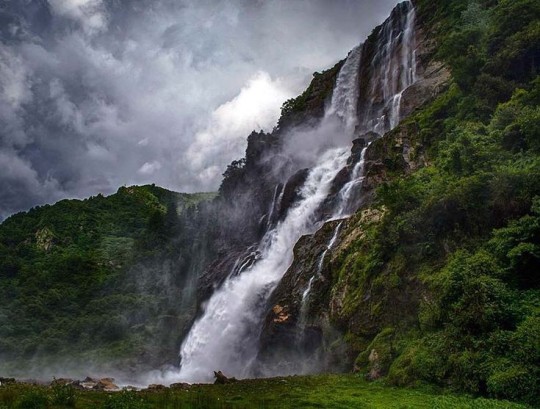
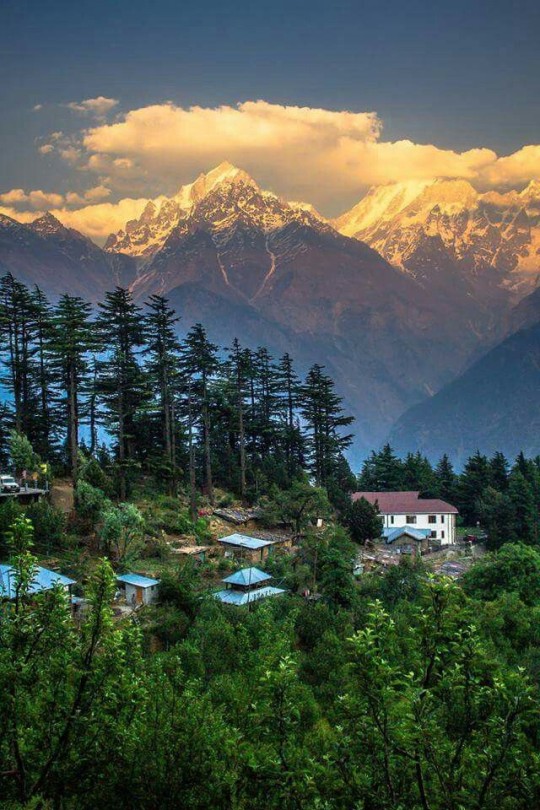


I've had these pictures in my Pinterest board for long and I'm very veryyy excited to visit! I might dig myself a hole in middle of a forest and stay there for eons😭😭 I'm not even kidding, I've waited so long to come there. This year, its finally happening. So yayyy 🗻❤
10 notes
·
View notes
Text
Today India could be the first country to land a spacecraft on the moon’s little-explored south pole! which is of course neat. i mean i do think we should all pick up after ourselves in space a bit more, but that’s not the point atm. Nor do i think nation-states (or pitiably short-sighted robber baron billionaires) should be the focus or face of space exploration. BUT.
The Indian space program is also neat as part of what might become a larger shift, and one i’ve kinda been watching curiously for since i was a kid. See, the natural resource you really really need in space travel is not steel or land or oil it is being in the Global South. The nearer you are to the equator, the easier it is to use the natural rotation of the Earth slingshot your big heavy rocket into space. It’s the reason the earliest successful space programs (Soviet and then American) were and still are based in what is now Kazakhstan, and in Florida. That’s about as south as they could get.
So, to wildly generalize, the nearer you are to the equator, the better access you have to the sky. Yes there are exceptions, there are a bunch of types of orbits and reasons to launch farther north etc, but basically: position on the planet is a natural resource.
That’s not to say it’s a resource that should be exploited under a capitalist system that’ll just fucking trash every resource it gets its hands on by requiring ever-greater consumption. I mean “resource” in i guess an older way: a valuable part of your ecosystem. Like living near a navigable river, only the river goes 62 miles straight up.
25 notes
·
View notes
Text

Patrick Colquhoun was born born in Dumbarton, on March 14th 1745.
Colquhoun was sent to the new world and served an apprenticeship as a sixteen-year-old in Virginia in North America. Likely working in a tobacco store.during the American Revolution he was part of the Government militia, in what was a Glasgow regiment to contribute to the government’s war effort. This part of history is being explored at the moment in the hit show Outlander.
On his return to Glasgow he became one of the city’s famous/imfamous ‘Tobacco Lords’. He had multiple commercial interests and was also a co-partner in the Glasgow-West India firm, Colquhoun & Ritchie, that traded with Jamaica and Antigua. As such, his wealth was derived from transatlantic slavery and its commerce, perhaps this is why he is not as well known in his native Scotland, we have a habit of brushing over the shame in the abhorrent trade of human beings.
In 1782 he built Kelvingrove House - in what is now Kelvingrove Park - as his residence. Colquhoun was Lord Provost of Glasgow, 1782-1784 and founder and the first Chairman of Britain’s oldest Chamber of Commerce in Glasgow in 1783. He was an honorary graduate of the University and the Colquhoun Lectureship in Business History is named for him. He moved to London in 1789 where he became a magistrate and published pamphlets on policing and other social issues of the day.
It is due to his work in London and those writings on policing he is credited with being the founder of the first regular investigative police force in England, The Thames Valley Police the first regular professional police force in London. Organised to reduce the thefts that plagued the world’s largest port and financed by merchants, the force was directed by Patrick Colquhoun and consisted of a permanent staff of 80 men and an on-call staff of more than 1,000. Two features of the marine police were unique. First, it used visible, preventive patrols; second, officers were salaried rather than stipendiary, and they were prohibited from taking fees. The venture was a complete success, and reports of crimes dropped appreciably. (In 1800 the government passed a bill making the marine police a publicly financed organisation.) This was a decades before Robert Peel established the Metropolitan Police, and it has to also be noted around the turn of the 18th City of Glasgow Police was established.
Colquhoun’s treatises on police also inspired the foundation of police in Dublin (Ireland), Sydney (Australia), and New York (USA).
Colquhoun’ has also been criticised for his violent oppression “wholly in the service of an industrialist and property-holding class in the earliest incarnation of socio-economic warfare in the Atlantic economy.” He “organised political surveillance by spies and snitches of those opposing slavery. In addition to his Virginia cotton interests he owned shares in Jamaican sugar plantations.” So by many accounts a nasty piece of work.
Colquhoun has been called ‘the Father of Glasgow’ because of his role in promoting Glasgow’s trade and manufacturing during the late 1700s. In fact, he referred to himself in this way when drawing up his will in 1817. We have a name for such people in Scotland, and it really fits this guy- Baw Heid.
8 notes
·
View notes
Text
Unit 01 Blog
Hi everyone, welcome to my first blog post! My name is Khushi, and I am in my fourth year of Environmental Science at the University of Guelph.
My current relationship with nature is a blend of deep appreciation and profound connection. Allowing myself to spend time in nature has now become a source of calm and rejuvenation for me, especially during moments of stress. I would say my love for nature developed in my childhood, as I was always captivated by the beauty of the outdoors. I grew up with a close-knit family that was always engaged in outdoor activities, so we would take advantage of the hot summers, which were always filled with joyful gatherings. From beach trips to camping trips up North, spending time outdoors always excited me as I was growing up. The many camping trips sparked my admiration for nature as I witnessed its beauty and wonders up close. I remember one evening my cousins and I ventured onto the forest trails at our campsite for a night walk. As we moved through the stillness, I felt a sense of peace around us. This moment fostered a lasting bond with nature that continues to inspire and ground me in my everyday life.
There was also a time in my childhood where I had the opportunity to go to India with my mom for a few months, and I thank her till this day for taking me. In those few months I was exposed to a whole new country which offered a different aspect to the beauty and diversity of nature. During our stay in India, we stayed at my grandpa’s house, and I was ecstatic to discover a guava tree flourishing in his front yard. As a little girl, the excitement I felt picking a ripe fruit from a tree and savouring it was an experience that filled me with joy. I think back to that moment when I saw that tree and it reminds me of how much nature has to offer. I also found myself immersed in the great outdoors daily, often returning to the house with mosquito bites, sun-kissed skin, and/or dirt on my clothes from all the dirt pies I would be making. Experiencing a different environment of nature in India as a child sparked a sense of wonder and excitement within me since I was given an opportunity to immerse myself in India’s beautiful environment.
My love for the outdoors has guided me towards pursing a degree in environmental science. My time at university has deepened my understanding of the environment, nature, and living things in remarkable ways. Over the past three years, I have found myself admiring nature and noticing all the living components that are a part of it. I also have developed a love for exploring forest trails across parks in the GTA. The happiness I gain from fulling immersing myself in my surroundings on these trails makes me appreciate every detail that composes the nature that is around me. I cherish capturing the beauty of the natural world through photos whenever I do find myself in nature. Capturing these moments allows me to revisit what I had the opportunity to encounter, making me thankful for the incredible gifts that nature provides.

I took this picture the other day in a trail in Mississauga. As I was walking through the trail with vibrant greenery, I spotted a fascinating sight. It was a spider crafting its web while dangling from a leaf on a beautiful tree. I stopped to watch and observe the spiders intricate process. The spider, with its legs moving in a precise motion, was spinning its thread that glistened in the sunlight. In this moment of watching natures artistry unfold gave me a reminder of the incredible patience and precision found in such environments.
3 notes
·
View notes
Text

Columbus died in 1505 at the age of 55. He was such a monster that the king and queen of Spain refused to invite him to the kingdom after his voyage to the Americas because of how evil he was during his financed expedition. Word spread fast about how he and his men raped and tortured and murdered the indigenous people in the Caribbean islands.
He became a pariah. He had to flee Genova (Italy) because he raped a 13 year old girl and hid in Spain, where he was broke and bedridden and finally died while his relatives shunned him from the public due to the unthinkable acts he did while at sea. When he died, he was never recognized as an explorer or discoverer of a new world. He was thought of as a “gross character with Gonorrhea, who butchered kids.”
Many Years later, when Settlers were colonizing North America, they needed a white hero to name as the person who discovered the land to justify their colonization and mistreatment of Native Americans. they randomly chose Christofo Colombo because his name had “Christ” in it, and to make it sound more European and Christian, they changed his name to Christopher Columbus, even though he never stepped foot on American soil. Then schools started teaching it. And the rest is history. But the truth is he never discovered anything. He was lost and ended up in a chain of islands. He thought he was in India. He massacred peaceful island civilizations. He murdered men, women, and kids. He tortured and raped. He brought new diseases to each island he invaded. Giving this monster a holiday is insane. We know better. And now we do better.
39 notes
·
View notes